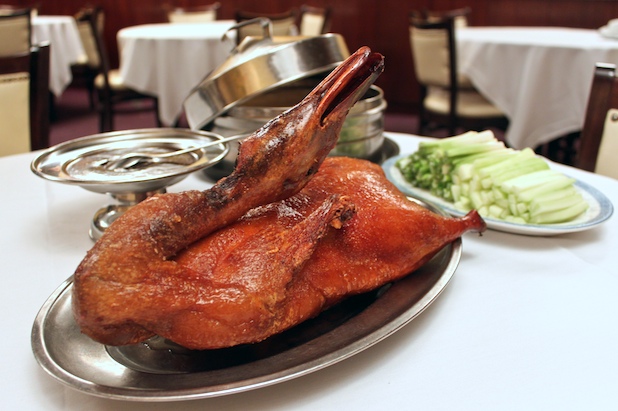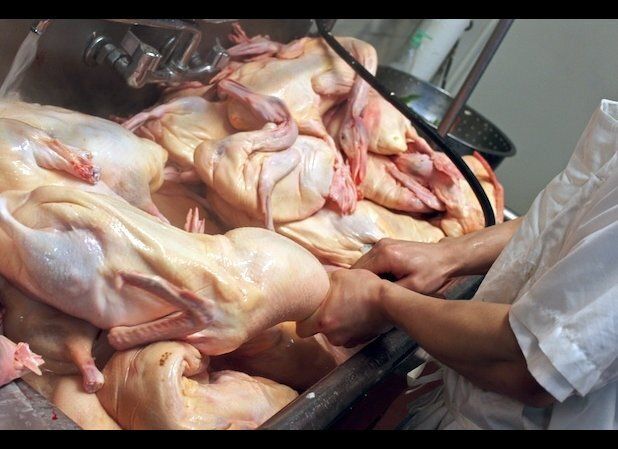
Peking Duck: Crispy, intensely flavorful skin, a crackly texture, golden-brown in color, with an intoxicating aroma that will make even a satiated stomach churn for more -- is it worth a two-day, elaborate and time-consuming process? After tasting it at The Peking Duck House, we'd have to say yes. Definitely, yes.
Arguably, one of the more complex cooking processes in Chinese cooking, Peking Duck, the national dish of China, requires a duck to be pumped full of air, coated in a maltose syrup, thoroughly dried, and roasted hanging up. We were able to visit The Peking Duck House location in Midtown Manhattan as they were busy preparing for the Chinese New Year starting on February 3rd, 2011 and get an inside look at how Peking Duck is made.
While this isn't a process that can easily be replicated at home because of the time and equipment needed, you can use some of the ideas behind the methods to create crispy skin when cooking either duck or other birds. For instance, allowing the skin to dry overnight in the refrigerator (uncovered) is a great way to make the skin crisper when cooking. Also, separating the skin from the flesh is another way to allow the fat to render more easily, and then basting the skin with the fat as the bird roasts is another key part of achieving flavorful and crackly skin.
If you haven't tried Peking Duck yet, then we highly recommend you do, not only for the taste but also for the experience: This duck was one of the best that we've ever had, with an arresting fragrance, crunchy skin and tender meat.
More How-To content from The Daily Meal:
